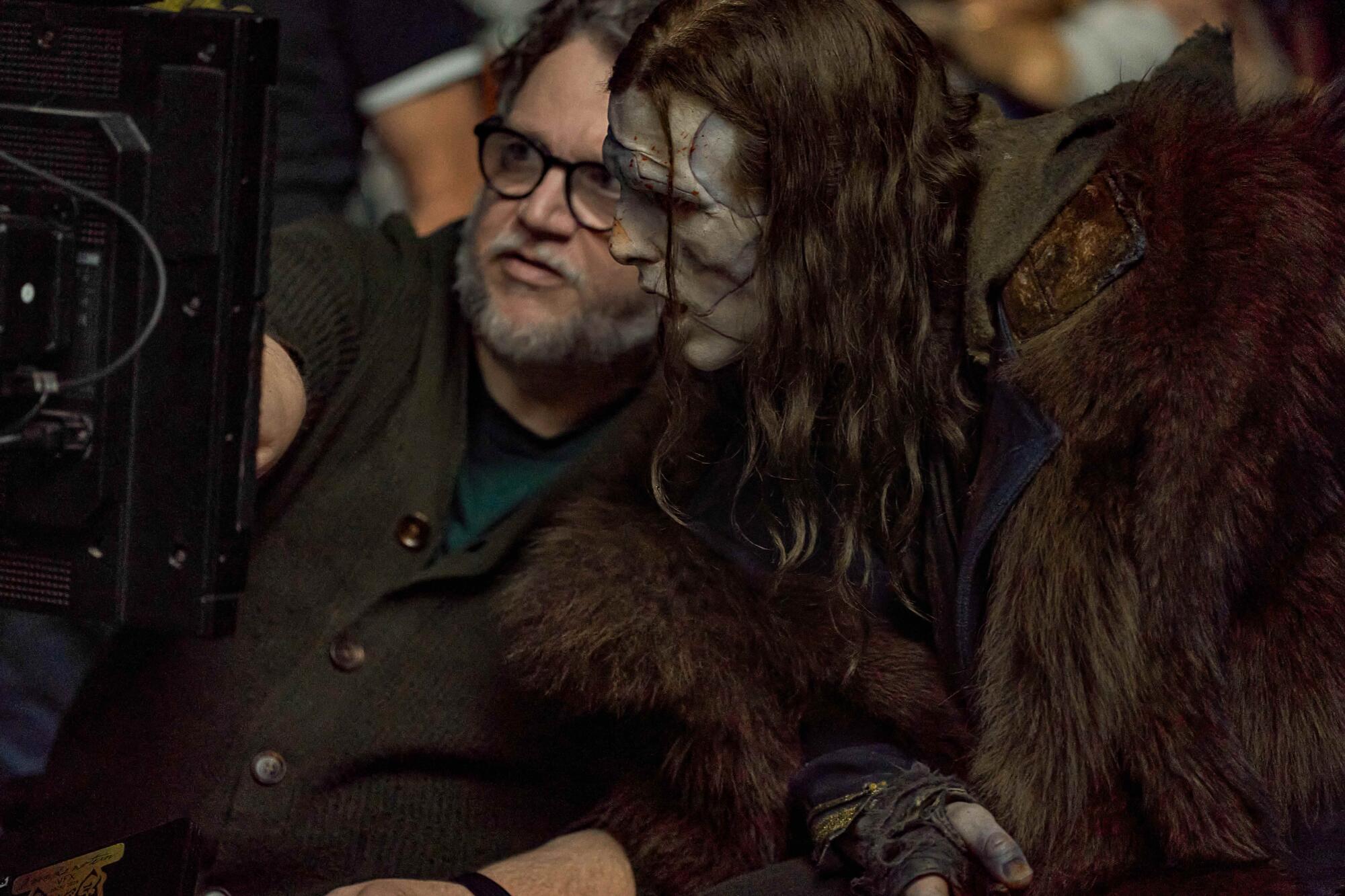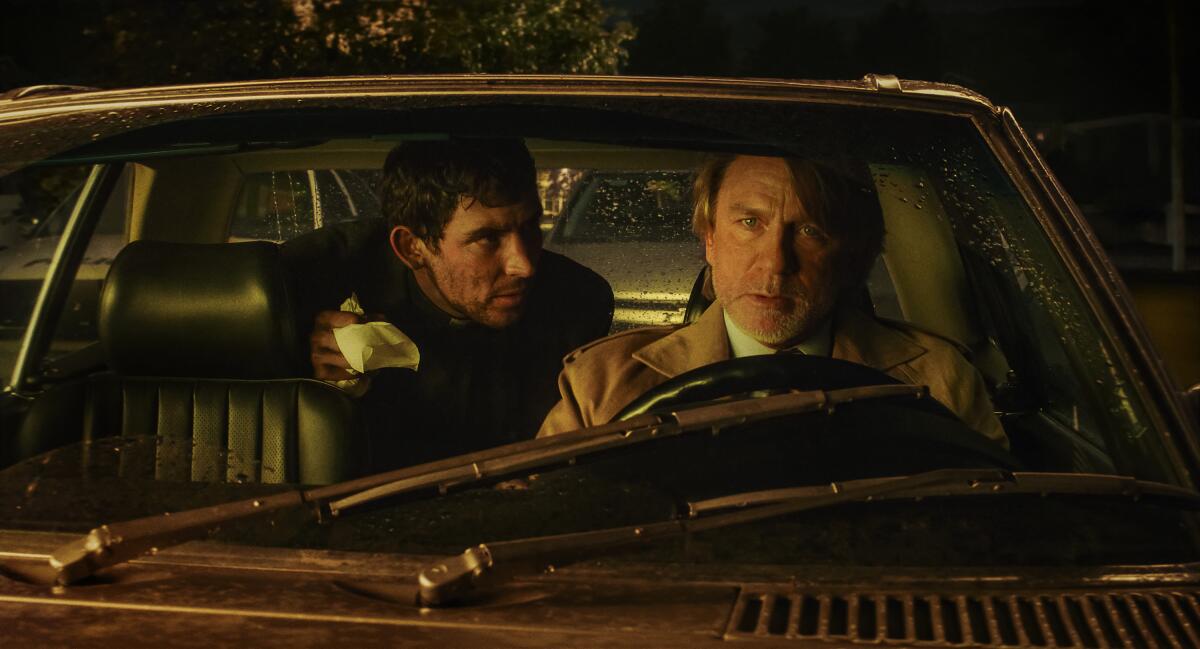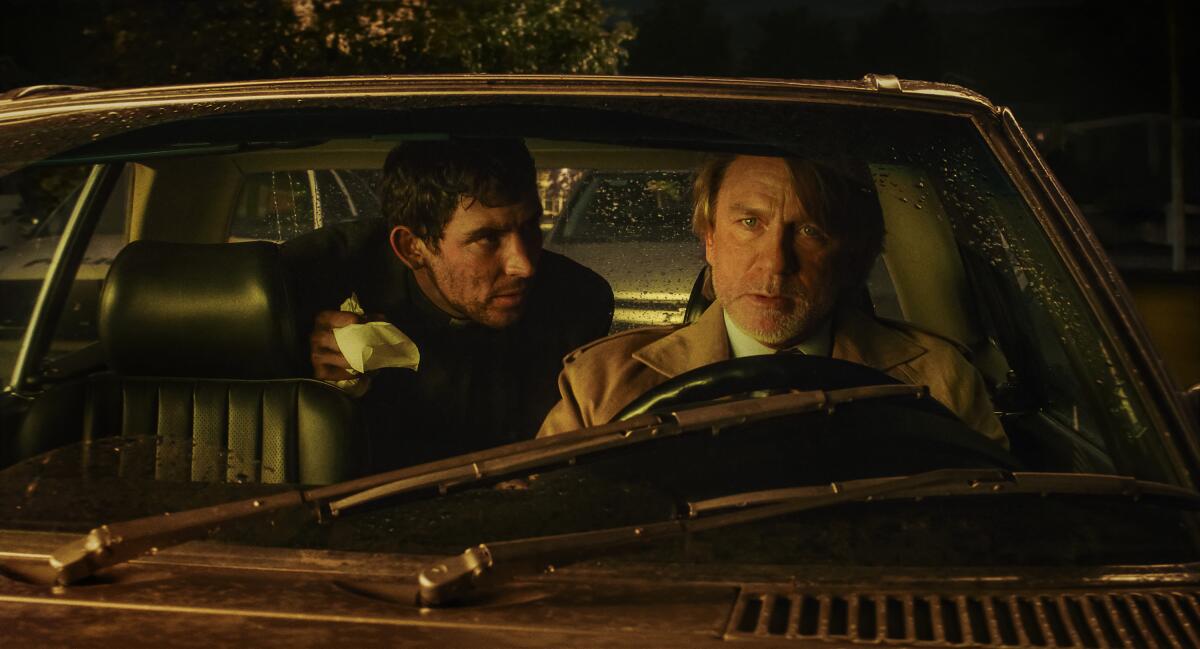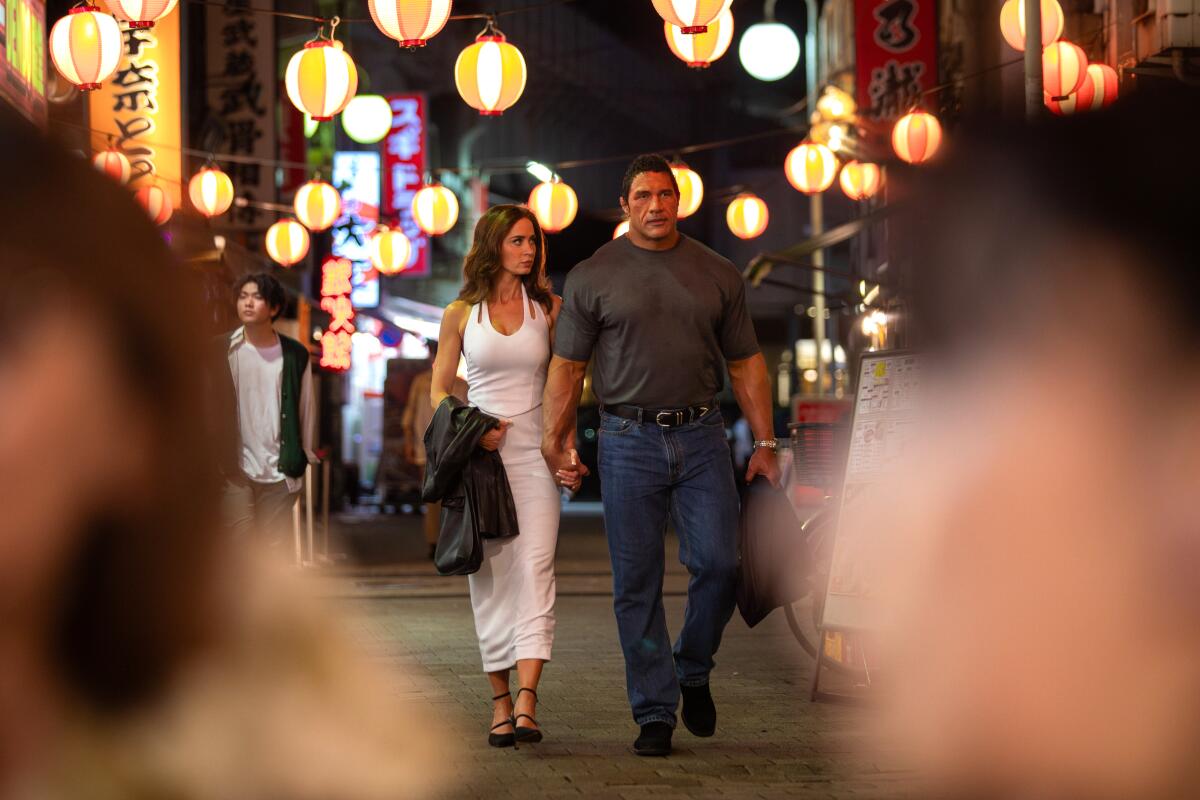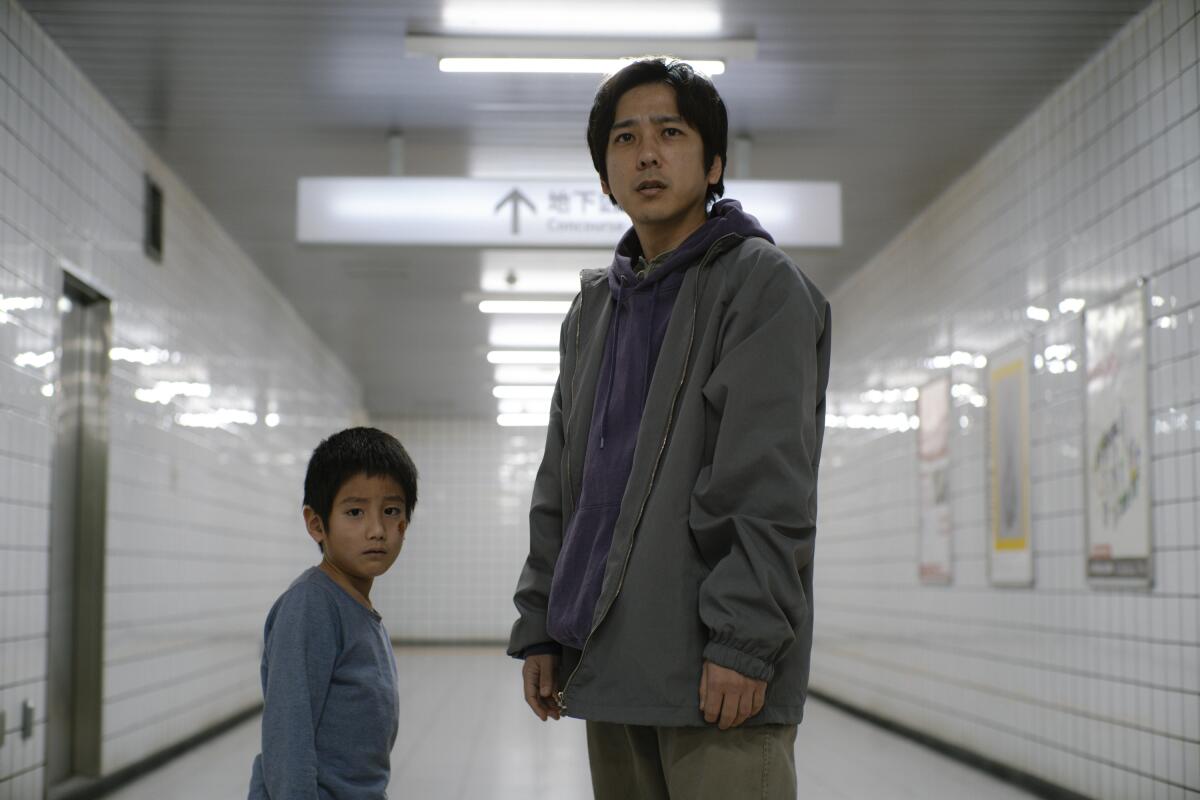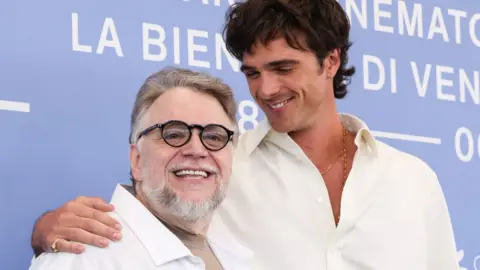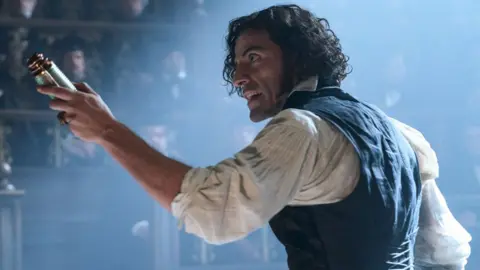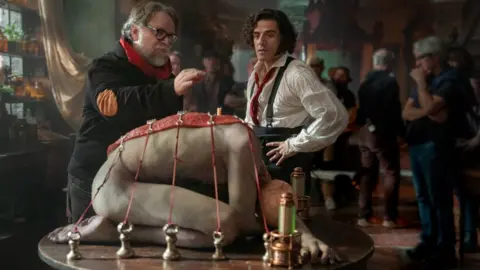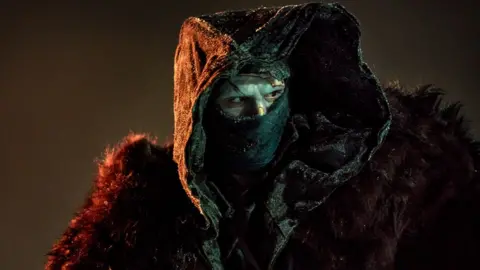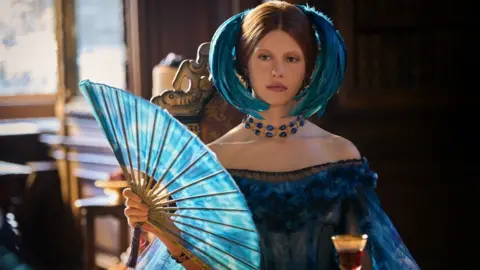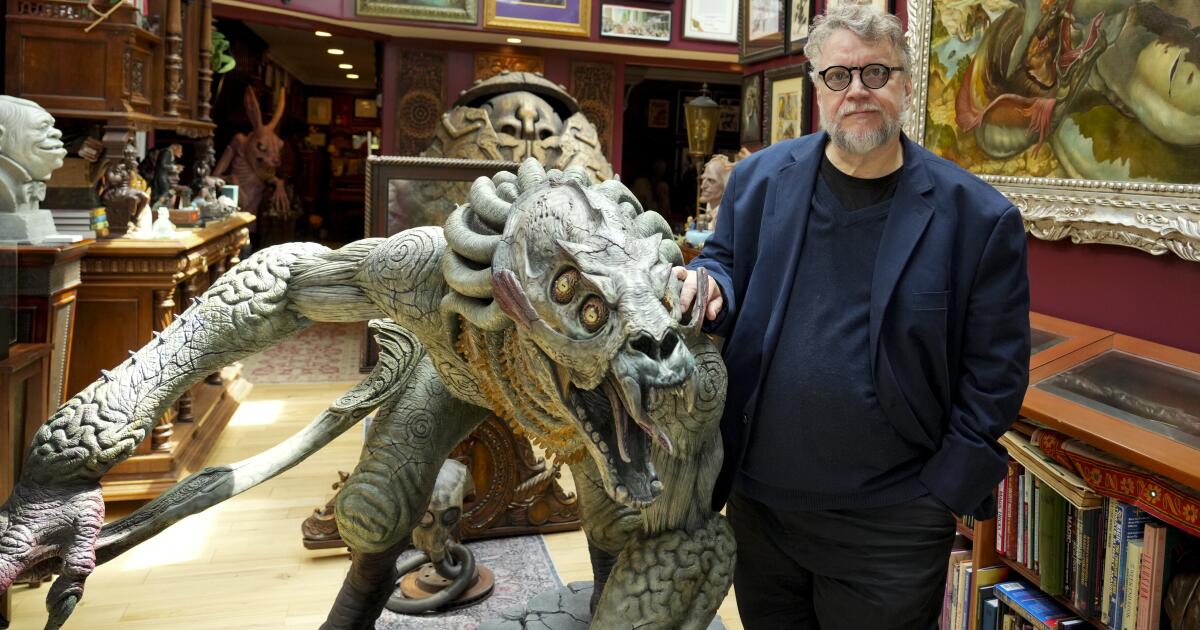How Jacob Elordi became a monster for Guillermo del Toro’s ‘Frankenstein’
A curse befell Jacob Elordi when he was a child. It happened in the aisle of a Blockbuster Video. The culprit for the incantation was the image of the now emblematic Pale Man from “Pan’s Labyrinth,” flaunting eyes on his palms on the back cover of the DVD.
“My mother remembers this,” an energetic Elordi tells me in a Hollywood conference room. “I came running through the corridor and I was like, ‘I need this DVD.’ And she was like, ‘That’s so much blood and gore. You can’t watch it.’”
“She told you, ‘I’ll get it if you promise never to work with that director,’” Guillermo del Toro, the filmmaker behind the Oscar-winning dark fantasy, chimes in, sitting next to Elordi.
His wish granted, Elordi watched “Pan’s Labyrinth” at a young age. The fable set against the Spanish Civil War forever changed him. “From that moment, because of the way that Guillermo wills magic into the world and into his life, I feel like there was some kind of curse set upon me,” the actor says. “I do genuinely believe that, as out there as it sounds.”
Now, Elordi, 28, has become one of the Mexican director’s monsters in his long-gestating adaptation of Mary Shelley’s “Frankenstein” (in theaters Friday, then on Netflix Nov. 7). Under intricate prosthetics and makeup, Elordi plays the Creature that arrogant scientist Victor Frankenstein (Oscar Isaac) breathes life into — an assemblage of dead limbs and organs imbued with a new consciousness.
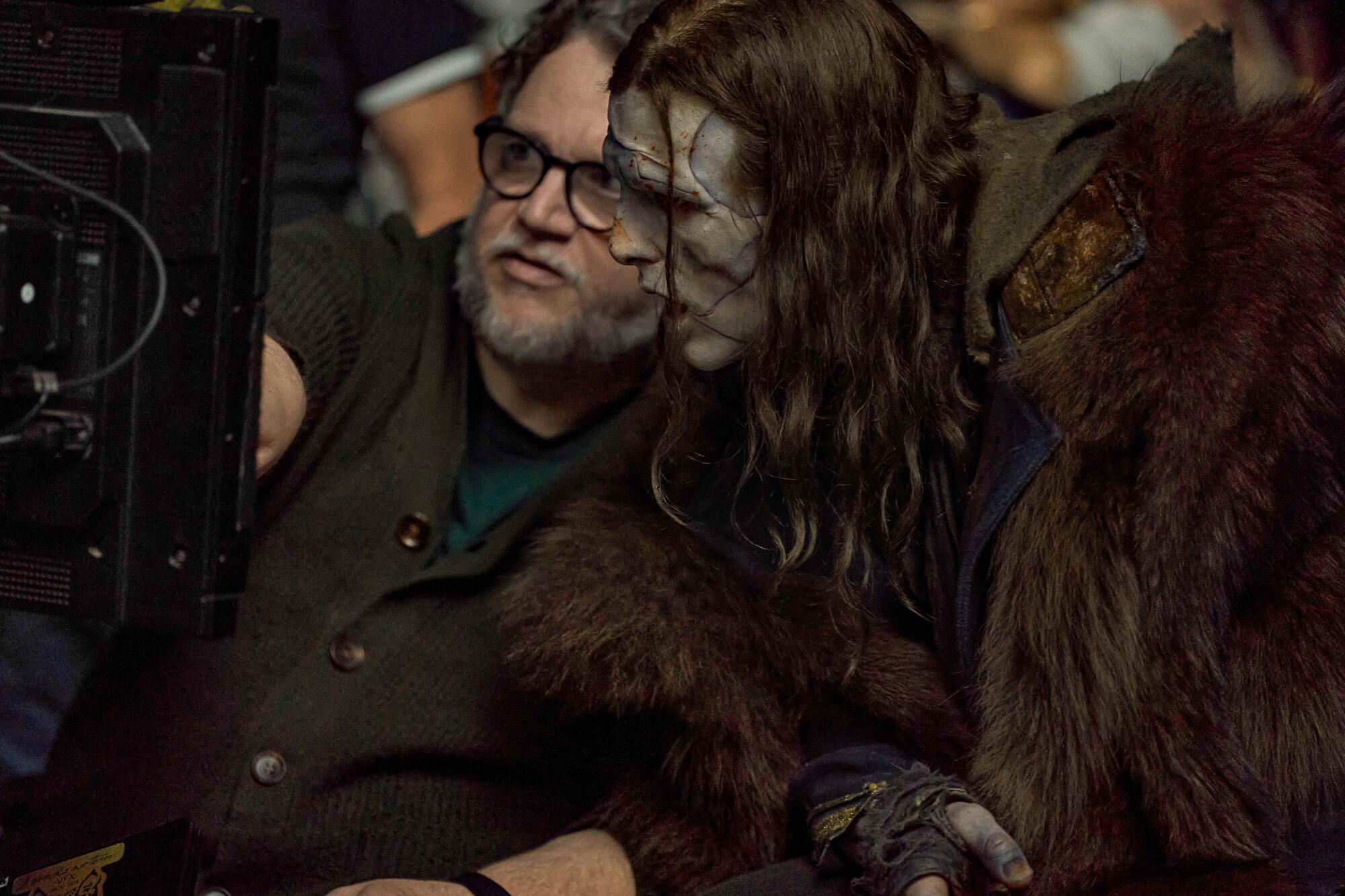
Elordi with writer-director Guillermo del Toro on the set of “Frankenstein.”
(Ken Woroner / Netflix)
Receptive to tenderness but prone to violence, the nameless Creature now has, in Elordi, a performer suited for all its unruly emotions. “It was the innocence in Jacob’s portrayal that kept getting me,” says makeup artist and prosthetics designer Mike Hill. “The Creature could snap on a dime like an animal.”
Capable of complex thought, Del Toro’s version of the monster ponders the punishment of existence and the cruelty of its maker. “They’re almost like John Milton questions to the creator,” the director says of the Creature’s dialogue. “You have to give it a physicality that is heartbreakingly uncanny but also hypnotically human.”
The imposingly lanky, gracefully handsome Elordi, born in Australia, has risen in profile over the last few years, thanks to roles in the hit series “Euphoria” and the psychosexual class-climbing thriller “Saltburn.”
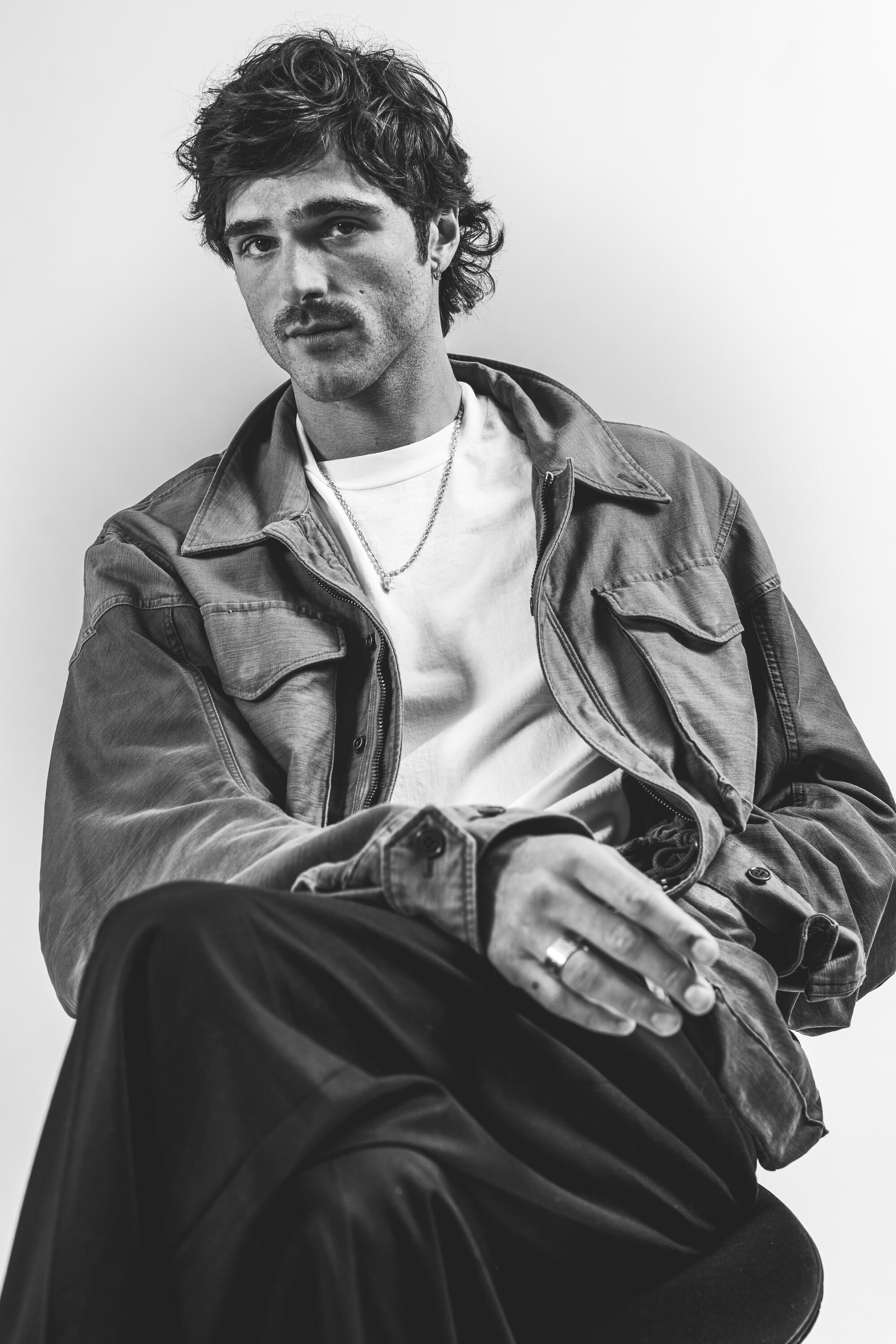
“It came from some other place,” Elordi says about the pull to the role of the Creature. “It felt like a growth, like a cancer in my stomach that told me that I had to play this thing.”
(Bexx Francois / For The Times)
“Frankenstein,” however, seems to have been calling his name for a long time.
“Early in my career, I had been reading what folks on the internet would say about me and someone had written after my first film, ‘The only thing this plank of wood could play is Frankenstein’s Creature. Get him off my screen!’” Elordi recalls. “I went, ‘That’s an absolutely fantastic idea.’”
The thought reentered Elordi’s mind while making Sofia Coppola’s 2023 “Priscilla,” in which he played a moody, internal Elvis Presley to Cailee Spaeny’s title character. Long before he was offered the part, the hair and makeup team on “Priscilla” shared with him their next job was, in fact, Del Toro’s “Frankenstein.”
“I looked at [hair designer] Cliona [Furey] and I said, ‘I’m supposed to be in that movie.’ And she said, ‘Did you audition?’ And I was like, ‘No, but I’m meant to be in that movie.’”
“It came from some other place,” Elordi further explains. “It felt like a growth, like a cancer in my stomach that told me that I had to play this thing. I’ve heard stories about this from actors, and when you hear them, you kind of go, ‘Sure, you were meant to play this thing.’ But I really feel like I was.”
Due to scheduling conflicts, Andrew Garfield, originally cast as the Creature, dropped out in late 2023. With production set to start in early 2024, Del Toro had limited time to find a new actor. When Elordi finally heard he was being considered, he had to read the screenplay within hours of receiving it, and be willing to dive into the darkness.
“I had a few weeks to prepare, but I was lucky to have also had my whole life — and I mean that sincerely,” he says, a grin crossing his face. “Playing this was an exploration into a cave of the self, into every experience with my father, with my mother, my experience with cinema, my scraped knees when I was 7.”
Del Toro says he knew Elordi would make the perfect Creature from speaking with him over Zoom. He remembers immediately messaging Isaac, his Victor, convinced that Elordi could play both “Adam and Jesus,” which are the two facets that the creature represents for the director.
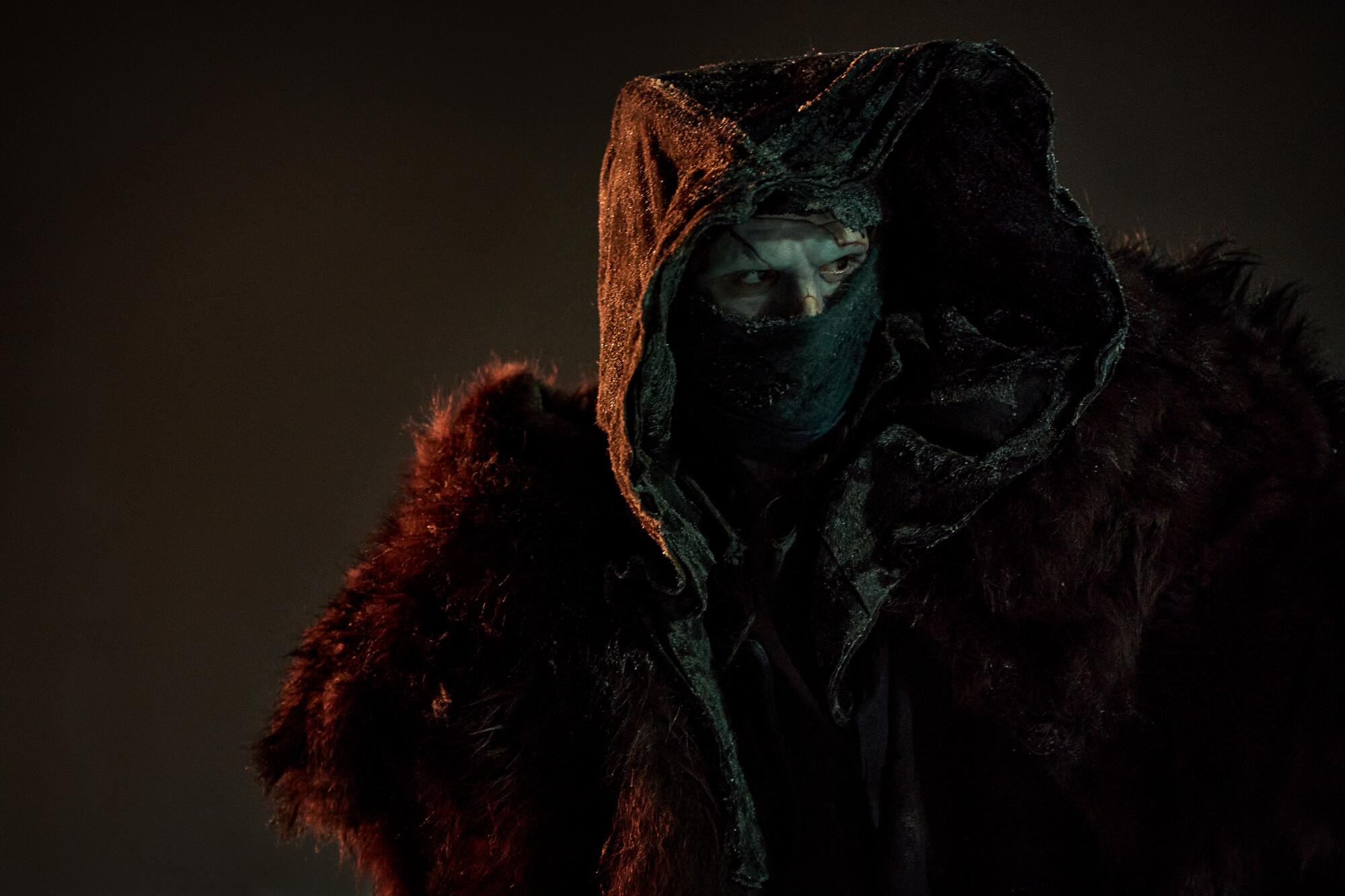
Jacob Elordi as the Creature in the movie “Frankenstein.”
(Ken Woroner / Netflix)
“I don’t think I’ve experienced miracles many times in my life,” Del Toro says. “And when somebody comes to your life in any capacity that transforms it, that happened here. This man is a miracle for this film.”
As he typically does for all the actors in his films, Del Toro sent Elordi several books ahead of working together. Elordi’s deep-dive reading list included the bedrock Taoist guide “Tao Te Ching,” Stephen Mitchell’s well-regarded translation of the Book of Job and a text on the developmental stages of a baby.
The most complex element of the performance, Del Toro believes, is playing “nothing,” meaning the blank, pure state of mind of a living being in infancy. “A baby is everything at once,” Elordi says. “It’s deep pain, deep joy, curiosity. And you don’t have chambers for your thoughts yet.”
Right before “Frankenstein,” Elordi had been shooting Prime’s World War II miniseries “The Narrow Road to the Deep North” in Australia, an experience he describes as “grueling,” one that involved losing substantial weight. He repurposed his body’s subsequent fragility as a dramatic tool.
“My brain was kind of all over the place,” he remembers. “I had these moments of great anguish at around 3 a.m. in the morning. I’d wake and my body was in such pain. And I just realized that it was a blessing with ‘Frankenstein’ coming up, because I could articulate these feelings, this suffering.”
Aside from being an outlet for his exhaustion, the transformation also helped Elordi to recalibrate. “Frankenstein” arrived at a time where he found himself wrestling with a crisis of purpose.
“At that time in my life I really wanted to hide,” Elordi says. “I really wanted to go away for a while. I was desperate to find some kind of normalcy and rebuild the way that I acted and how I approached making movies,” Elordi says. “And when the film came along, I remember being like, ‘Ugh, I really wanted to go away right now.’ And I realized immediately the Creature was where I was supposed to go away to. I was supposed to go into that mask of freedom.”
Was he trying to escape the pressures of dawning fame? Elordi says it was much more philosophical than that.
“Who do I think I am? Who do I present myself as? What do I like? What don’t I like? Do I love? Can I love? What is love? Every single thing of being alive,” he says with a radiant smile. “The unbearable weight of being.”

“At that time in my life I really wanted to hide,” Elordi says of the moment just before taking on Del Toro’s version of the classic. “I really wanted to go away for a while. I was desperate to find some kind of normalcy and rebuild the way that I acted and how I approached making movies.”
(Bexx Francois / For The Times)
The part entailed physically burying himself in another body. It allowed Elordi to renounce any hang-ups, surrendering to a fugue state of mind. Every moment felt like a discovery.
“I was liberated in this makeup,” he adds. “I didn’t have to be this version of myself anymore. In those six months, I completely rebuilt myself. And I came out of this film with a whole new skin.”
Elordi sat for 10 hours in the makeup chair on days that required full body makeup — only four if they were only shooting the Creature’s face. “Jacob wanted to wear the makeup and he knew it would be grueling,” Hill says.
“It was nothing short of a religious experience,” Elordi says. “The excitement I had even just getting my body cast — I was buzzing.”
Hill believes that the decision to make the Creature bald for the scenes where he is a “baby” is what makes Del Toro’s take unique within the “Frankenstein” mythos.
“Instead of what happens in cloning where a baby grows, Victor literally did make a baby, just a big one,” says Hill. “The Creature learns quickly because its brain and its bodies have already lived once. God knows what this Creature knew before he forgot and needed to be reminded.”
As for the skin, Del Toro envisioned a marble-statue look that he had been pursuing in earlier movies like “Cronos,” “Blade II” and “The Devil’s Backbone.”
“Mike took it and made it incredibly subtle: flesh with the violets and the purples and the pearlescence,” Del Toro says. “He bested every concept I’ve ever imagined by making it look like parts of exsanguine bodies. That was so brilliant.”
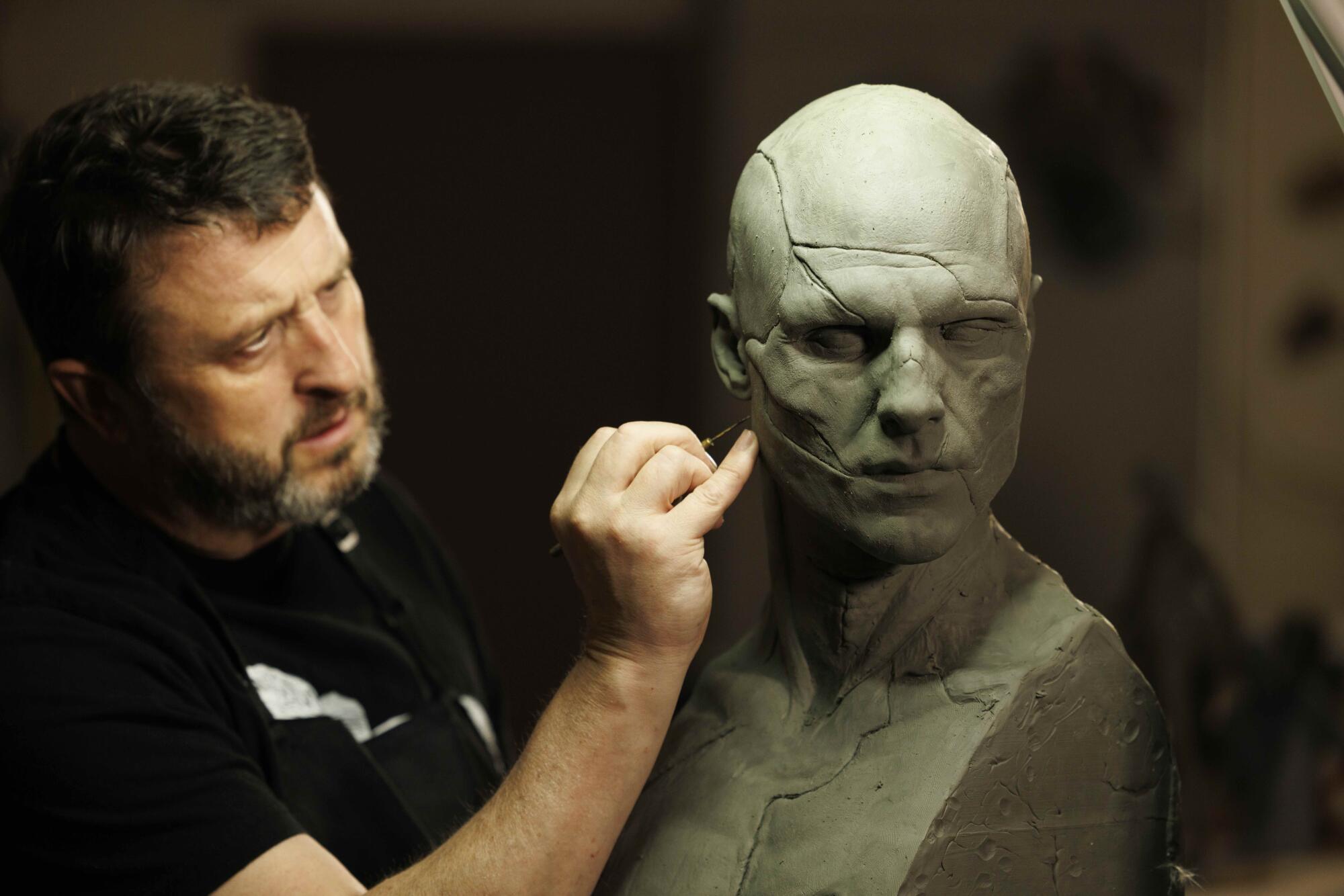
“It was the innocence in Jacob’s portrayal that kept getting me,” says makeup artist and creature designer Mike Hill, here seen working on a model for “Frankenstein.”
(John P. Johnson / Netflix)
A Frankenstein’s monster with rainbow-colored flesh, Hill says, could only exist in the context of a Del Toro picture.
“He had to look beautiful, like a phrenology head or an anatomical manual,” Del Toro adds. “We agreed — no scars. No sutures. No vulgarity.”
Del Toro’s casting of Elordi was fully validated when the actor walked on set for the first time in full makeup. “The whole process was anticipation,” Elordi says. “And then I opened my eyes and he was looking back at me, and it was exactly what I thought it would be when I first read the screenplay.”
For Hill, it was watching Elordi doing an interview, where his limbs seemed loose and relaxed, that convinced him he was the right actor to sculpt the Creature on. “I was like, ‘Look at those wrists.’ And then he turns, and he has these lashes,” Hill says. “Big eyes are beautiful for makeup. And structurally, Jacob has an unassuming nose, so you can build on that.”
“And he has a big chin,” Hill continues amid Del Toro’s boisterous laughter. “I was like, ‘I’m not going to glue one on.’”
Amused at his anatomy being dissected in front of him, Elordi claps back, mock-defensively: “He was grotesque to look at, but he was somewhat gifted. A deformed skinny freak.”
By the time Elordi got out of the makeup chair, he says, the electricity in his body had shifted. He stepped on set physically depleted but in the ideal headspace to embody the creature as it navigates an inhospitable reality.
“He’ll forever be fused into my chemistry,” Elordi says. “He was always there and now I have a little place for him. But I can’t rationalize him.”
Whether by curse or by miracle, Elordi’s Creature lives. And the actor feels reborn.
